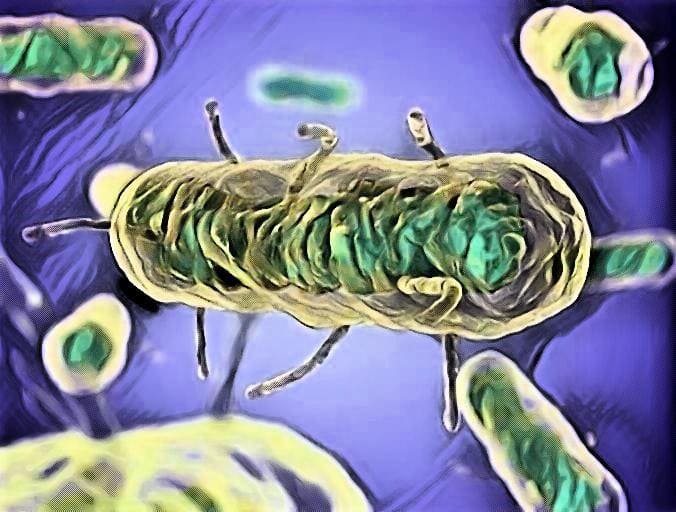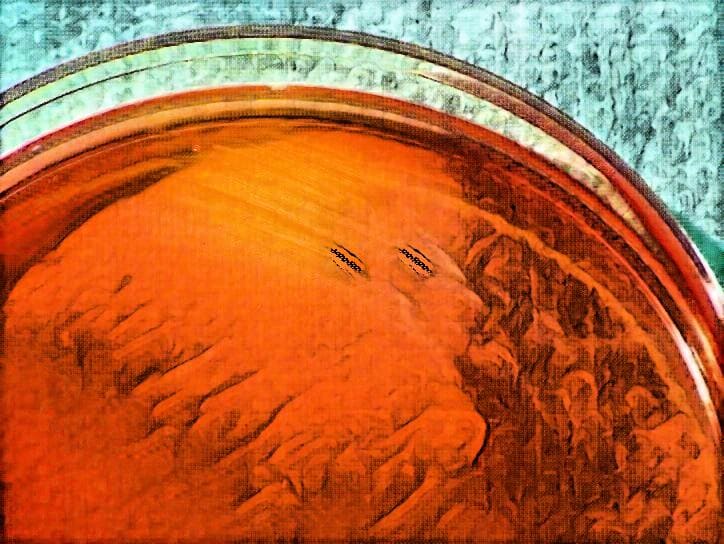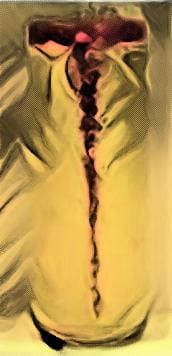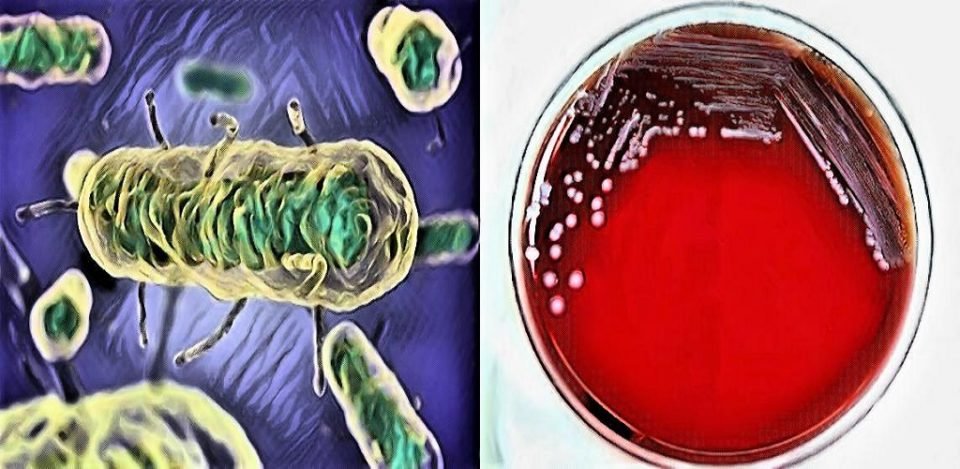Hey, Good to see you here 😀 …… In this Article, We’re gonna discuss in Detail the Morphology & Culture characteristics of Yersinia pestis….. If you have any queries, don’t forget to mention in Comments….. Thanks
Morphology of Yersinia pestis (Y. pestis)
Yersinia pestis is a short, plump, ovoid, rod shape (bacillus) bacterium with rounded ends and convex sides.
The size of Y. pestis is about 1.5 mm × 0.7 mm (micrometer).
Yersinia pestis is arranged singly, in pairs or in groups.
Y. pestis is a motile bacterium when in the host body but is non – motile when isolated in the laboratory.
Yersinia pestis is a flagellated bacterium with peritrichous flagella arrangement.
The Yersinia pestis is a non–sporing bacterium.
The Y. pestis is surrounded by a slime layer which may be a capsule or an envelope which can easily be demonstrated using India ink preparation, appear as a clear halo in a dark background.
Yersinia pestis is a Gram -ve (Negative) bacterium.

In the microscopic view of Giemsa or Methylene blue-stained smear, shows bipolar staining (safety pin like appearance) with the two ends densely stained and a clear central area. Also, pleomorphism is quite common in Yersinia pestis and in old cultures, involution forms are commonly seen (like Coccoid, club-shaped, filamentous & Giant form).
Culture Requirements of Yersinia pestis (Y. Pestis)
Special requirements – Yersinia pestis or Y. pestis have no complex nutritional requirements and readily grow in an ordinary media like Nutrient Agar medium (NAM). Commonly the NAM & Blood Agar medium is used for the cultivation of Yersinia pestis in Laboratory.
Optimum temperature – The temperature for the growth of Yersinia pestis ranges from 2–45°C but the optimum temperature for the cultivation in the laboratory is 27°C and usually cultivated at this temperature in laboratories. However, the envelope develops best at 37° C.
Optimum pH – Y. pestis can survive at 5.0–9.6 pH but the maximum growth observed at 7.2. Also, the pH requirement varies as per the strain of Yersinia pestis.
Oxygen requirements – Yersinia pestis (Y. pestis) is an aerobic bacterium i.e. grow best in the presence of oxygen and it is also a Facultative anaerobic organism i.e. can grow in the low oxygen environment.
There are various culture media used for the cultivation of Yersinia pestis (Y. pestis) in the laboratory and most commonly the Nutrient Agar medium and Blood Agar medium is used, the other media are as follows –
- Columbia Horse Blood Agar medium
- Trypticase Soy Agar medium
- MacConkey Agar medium
- Oil or Ghee Broth
- The liquid medium (Nutrient Broth medium, TSB medium, etc.).
The oil or Ghee (Clarified butter) broth is particularly used for the cultivation of Yersinia pestis in the laboratory due to its characteristic growth that occurs in ghee broth. The ghee broth can easily be prepared by adding the Ghee or oil in the Flask or Test tube containing broth medium. It will float on the medium due to its low density.
Cultural characteristics of Yersinia pestis (Y. pestis)
Cultural Characteristics Nutrient Agar Medium (NAM) MacConkey Agar medium Blood Agar Medium
Shape Circular Circular Circular
Size 1-2 mm 1-2 mm 1-2 mm
Elevation Low Convex Low Convex Low Convex
Surface Smooth ; mucoid (capsulated) Smooth ; mucoid (capsulated) Smooth ; mucoid (capsulated)
Color Colorless – Greyish white Colorless Greyish white
Structure Transparent – Opaque Transparent Translucent –Opaque
Hemolysis ----- ----- γ-Hemolysis (Non - Hemolytic)
In liquid culture media like Trypticase soy broth or Nutrient broth, a flocculent growth of the bacterium occurs at the bottom along with the sides of the tube or flask (whatever is used) with a little or no turbidity throughout the solution, which is further analyzed for the morphology (under the microscope), gram reaction, biochemical tests, and Yersinia pestis-specific tests.
In Blood Agar medium, some of the strains show Gamma hemolysis i.e. no hemolysis occur on blood agar medium but the colonies are brown colored due to the absorption of the hemin pigment.

In MacConkey Agar medium, the colonies of Yersinia pestis are colorless due to the lack of lactose fermentation which is of great importance in differentiating Y. pestis from other Bacteria that may present in the specimen, especially from Gram-positive bacteria and E. coli & Klebsiella species which are lactose fermentors and gives Pink colored colonies on MacConkey agar medium.

In Ghee or Oil Broth medium, the oil floats on the top of the broth so a Characteristics growth of the organism occurs as it hangs down into the broth from the surface of the broth resembling the stalactite and popularly known as Stalactite growth.

That’s all about the Morphology & Culture Characteristics of Yersinia pestis (Y. pestis)
Frequently Asked Questions (FAQs)
Q1. What are the characteristics of Yersinia culture?
Yersinia species are facultative anaerobes that grow well on a variety of culture media. Colonies of Yersinia are usually small, round, and smooth with a slightly raised center. They are non-hemolytic and typically do not produce any distinctive pigments.
Q2. What is the morphology of Yersinia?
Yersinia are gram-negative, non-sporulating, non-motile rods that are typically 0.5-0.8 μm in diameter and 1-5 μm in length. They are often described as being “plump” or “coccobacillary” in shape, meaning that they are shorter and more rounded than typical bacilli.
Q3. What is the culture media of Yersinia pestis?
Yersinia pestis can be cultured on a variety of media, including blood agar, MacConkey agar, and sheep blood agar. However, the most commonly used media for culturing Y. pestis is a specialized medium called “yersinia selective agar” (YSA), which contains specific nutrients and inhibitors that encourage the growth of Y. pestis and suppress the growth of other bacteria.
Q4. Which of the following is a characteristic of Yersinia pestis?
Yersinia pestis is the causative agent of bubonic, septicemic, and pneumonic plague. It is known for its ability to form “safety-pin” shaped bipolar staining on Gram staining, which is a distinctive feature of the bacterium.
Q5. What are cultural characteristics of bacteria?
Cultural characteristics of bacteria refer to the observable traits of bacteria grown in culture, such as colony morphology, pigment production, growth rate, and motility. These characteristics can be used to help identify and classify bacterial species.
Q6. What are culture characteristics of bacteria?
Culture characteristics of bacteria include features such as colony morphology, growth rate, pigmentation, and motility. The type of culture media used to grow bacteria can also affect their cultural characteristics. These characteristics can be used to identify and differentiate bacterial species.
User Review
( votes)
Laboratory Hub aims to provide the Medical Laboratory Protocols & General Medical Information in the most easy to understand language so that the Laboratory Technologist can learn and perform various laboratory tests with ease. If you want any protocol to be published on Laboratory Hub, Please drop a mail at contact@laboratoryhub.com. Happy Learning!

